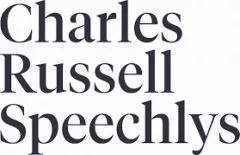The World Anti-Doping Agency (WADA) Code is the core document that provides the framework for harmonised anti-doping policies globally and has been adopted as the basis for the majority of sports regulators' own anti-doping policies. Revised at the end of 2008, the Code has recently come under scrutiny, particularly in tennis, for the way it addresses the use of recreational drugs.
Currently cocaine, cannabis and ecstasy feature on the WADA Prohibited List of substances along with anabolic steroids and growth hormones (amongst others). As such, the starting point is that all prohibited substances are set on an equal footing, regardless of the reality of how harmful or performance enhancing they may be. Where the Code draws a distinction is in that: (a) some recreational drugs are prohibited only "in competition"; and (b) the sanctions imposed on individuals who test positive for a prohibited substance may be reduced in a wider range of circumstances for non-performance enhancing drugs.
The compelling story of Richard Gasquet's, the French tennis player's, clearance from a potential drugs ban illustrates these distinctions under the Code. In this case, Gasquet had tested positive for cocaine during the Miami Masters in March this year. The International Tennis Federation (ITF) and WADA wanted him serve a ban of two years, but an independent tribunal, appointed by the ITF, allowed him to resume his career after two months.
Gasquet's plea rested on two key aspects of the ITF's Anti-Doping Programme (which implements the WADA Code): first, that his test was taken "out of competition" as he had withdrawn from the tournament through injury; and second, that his sanction should be reduced on the grounds of no significant fault or negligence as the cocaine entered his system only when he kissed a young woman in a Miami nightclub. On the first ground, Gasquet's argument fell short. He had registered to take part in the tournament and, while he had subsequently pulled out, the ITF's Anti-Doping Programme was clear in that a player remained "in competition" (even after withdrawal) and subject to testing. On the second point, Gasquet found success. He was unable to establish no fault or negligence, which would have made a total waiver of the ban a possibility, but was able to establish that his fault or negligence was not significant, thus permitting the tribunal to halve his ban. (In fact, his ban was further reduced to 2 months by the tribunal exercising its discretion to avoid inflicting serious injustice on the player).
The judgment provides entertaining reading as the tribunal grapples with what kind of behaviour is and is not becoming of a single 22 year old professional sportsman. Their verdict? Read between the lines and it seems to be that you shouldn't really be heading to nightclubs notorious for recreational drug use and kissing strangers but, boys will be boys and should be allowed to let off steam, so this should only be seen to be a slight, rather than a significant error of judgment. It would be interesting to have seen the decision had this been an older player who was married or in a serious relationship.
This may not be the last we have heard of this. The ITF, which acts as the prosecuting counsel in such cases, and WADA have appealed the verdict taking the case before the CAS, which has the final say in matters of sports jurisdictions and we await their decision.
It has also been hard to miss the recent revelations of Andre Agassi's drug use. Agassi's recent confession that he tested positive for the highly addictive drug, crystal methamphetamine, and then lied to the Association of Tennis Professionals to escape a ban has brought the issue of doping in tennis into the mainstream media spotlight. The events in question occurred before WADA was founded in 1999 and at a time when anti-doping was managed by individual governing bodies. Under the rules in place at the time the use of performance enhancing drugs, a Class 1 offence, carried a suspension of two years, whereas Class 2, the use of recreational drugs, carried only a three-month ban. Agassi's excuse was that he accidentally drank from a drink spiked with crystal methamphetamine by his assistant, Slim, and thereby unwittingly ingested the drugs. This excuse was successful at the time but had the WADA code been in force it would likely have been subject to the no significant fault or negligence test. It is quite possible that he would not have been so lucky given his knowledge and confession that Slim was a crystal meth user who regularly spiked his soda. Would this have constituted significant enough negligence or fault to fall foul of the WADA Code?
There is certainly an argument that WADA should be more decisive in prescribing exactly how it thinks recreational drug users should be treated by regulators. Rather than leaving it up to the disciplinary bodies of different sports to make a judgment on the blameworthiness of users, if it is uniformity that WADA desires, it might consider distinguishing more definitively between performance enhancing and recreational drugs, perhaps by further amendment to the Prohibited List and distinct penalties. It may soon be time for WADA to decide whether it is there to eliminate hard-core cheats or hard drugs users.
The content of this article is intended to provide a general guide to the subject matter. Specialist advice should be sought about your specific circumstances.


